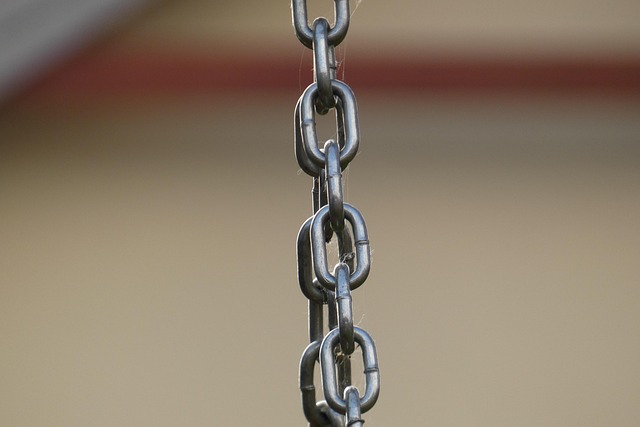Link equity distribution is a crucial SEO strategy that optimizes internal linking by ensuring each link positively contributes to a website's performance. Key tactics include site architecture analysis, high-quality anchor text, and structured navigation. Regularly audit internal links using tools like Google Search Console or Ahrefs to identify broken or weak links, fix 404 errors, and ensure meaningful anchor text. Analyze link equity distribution within pages to find weak connections not effectively conveying value. Utilize insights to implement strategies like restructuring, optimizing anchor text diversity, and building high-quality backlinks for enhanced overall distribution. Maintain a healthy internal linking profile by regularly auditing and strategically placing links for improved user experience and search engine visibility.
Struggling with a site structure plagued by broken or weak internal links? This comprehensive guide is your solution. Learn how to harness the power of link equity distribution, ensuring every page contributes to your site’s overall strength and authority. From understanding fundamental concepts like link equity to implementing effective strategies for improvement, this article covers it all. Discover essential tools, best practices, and monitoring techniques to build a robust internal linking structure that drives better search rankings.
- Understanding Link Equity Distribution: The Foundation for Strong Internal Links
- Identifying Broken or Weak Internal Links on Your Website
- Tools and Techniques for Analyzing Link Equity Flow
- Strategies to Improve Internal Linking Structure and Distribution
- Implementing Best Practices for Optimal Link Equity Assignment
- Monitoring and Maintaining Healthy Internal Link Profiles
Understanding Link Equity Distribution: The Foundation for Strong Internal Links

Link equity distribution is a crucial concept in SEO that forms the foundation for building robust internal linking structures. Each link on a website carries some ‘link equity’ or ‘link juice’, which passes from one page to another when a user navigates between them. Understanding how this equity is distributed helps users identify and address weak links, ensuring every page contributes to the overall search performance of the site.
To optimize your internal linking, focus on strategies that promote efficient link equity distribution. This involves analyzing your site’s architecture, identifying high-quality anchor text, and implementing a structured navigation system. By following these tips and continually refining your link equity distribution strategy, you can enhance the authority of every page on your website, ultimately improving its search rankings and user experience.
Identifying Broken or Weak Internal Links on Your Website

Identifying broken or weak internal links is a crucial step in optimizing your website’s structure and improving its overall performance. These issues can hinder user experience, impact SEO rankings, and lead to a high bounce rate. A thorough audit of your site’s internal linking should be conducted using various tools designed for this purpose. Look out for 404 errors, which indicate broken links, and analyze the anchor text used in incoming and outgoing links to ensure they are relevant and convey meaning.
By examining the link equity distribution within your pages, you can pinpoint weak links that may not be passing on enough value. A strategic approach using a link equity distribution SEO strategy, for instance, involves analyzing link popularity and the hierarchical structure of your website. Incorporating these tips into your workflow will enable you to create a more robust internal linking architecture, thereby enhancing both user navigation and search engine visibility.
Tools and Techniques for Analyzing Link Equity Flow

Understanding the flow of link equity is a crucial step in optimizing your site’s internal linking structure. There are several tools and techniques available to analyze this process, providing valuable insights for SEO improvement. One popular method is using link analysis tools like Google Search Console or Ahrefs, which can reveal the distribution of link equity across your pages. These tools offer data on anchor text usage, referring domains, and page-level metrics, allowing you to identify weak links and areas for improvement.
By examining the link equity distribution, you can uncover hidden opportunities to strengthen your site’s architecture. For instance, identifying high-value pages that aren’t passing along enough equity or spotting low-quality links impacting overall performance. With these insights, SEO practitioners can implement targeted strategies such as restructuring internal links, optimizing anchor text diversity, and building high-quality backlinks to enhance the overall link equity distribution tips for a more robust site structure.
Strategies to Improve Internal Linking Structure and Distribution

To improve internal linking structure and distribution, start by conducting a thorough audit to identify weak links and broken paths. Utilize SEO tools like Ahrefs or SEMrush for a comprehensive analysis of your site’s link equity distribution. Once identified, prioritize rebuilding crucial connections and creating new links from relevant pages within your site. A strategic approach involves distributing link equity evenly across important pages, ensuring each page has a reasonable number of incoming links.
Implement a balanced internal linking strategy by avoiding over-saturation with links on a single page and underdeveloped links elsewhere. This optimization technique helps search engines understand the importance of various pages on your site, enhancing overall accessibility and user experience. For instance, use anchor text that accurately represents the target page’s content to guide users and search engine crawlers alike. Consider this link equity distribution tutorial as a starting point, tailoring strategies to fit your specific site structure and goals.
Implementing Best Practices for Optimal Link Equity Assignment

Implementing best practices for optimal link equity assignment is crucial in ensuring your site’s internal linking structure works as efficiently as possible. Link equity distribution refers to how page authority is passed from one page to another through hyperlinks. To optimize this process, focus on creating a hierarchical structure that reflects the importance and relevance of pages. This involves using anchor text wisely, ensuring a balanced distribution of links among relevant pages, and prioritizing critical pages at the top of your site’s hierarchy.
A link equity distribution tutorial suggests starting with an audit to identify broken or weak links. Once identified, these links should be either fixed or removed to prevent passing incorrect signals to search engines. Additionally, using internal linking as a means to enhance user experience is essential. By strategically placing links within relevant content, you guide users and search engine crawlers through your site’s information architecture, making it easier for both parties to navigate and understand the context of each page. This holistic approach to link equity distribution tips not only improves SEO but also enhances the overall usability of your website.
Monitoring and Maintaining Healthy Internal Link Profiles

Monitoring and maintaining a healthy internal linking profile is an essential part of any SEO strategy. By regularly auditing your site’s link structure, you can identify weak or broken links that may be hindering user experience and search engine visibility. Tools like Google Search Console and third-party SEO platforms can help automate this process by alerting you to missing or duplicate content issues.
A key aspect of internal linking optimization is understanding and utilizing link equity distribution. This refers to the way in which link value is passed from one page to another within your site. A well-designed strategy ensures that important pages receive a strong signal, enabling better performance in search results. Using techniques like anchor text diversity, contextual linking, and strategic placement of internal links can help maximize link equity distribution SEO, ultimately improving overall website rankings and user engagement.
